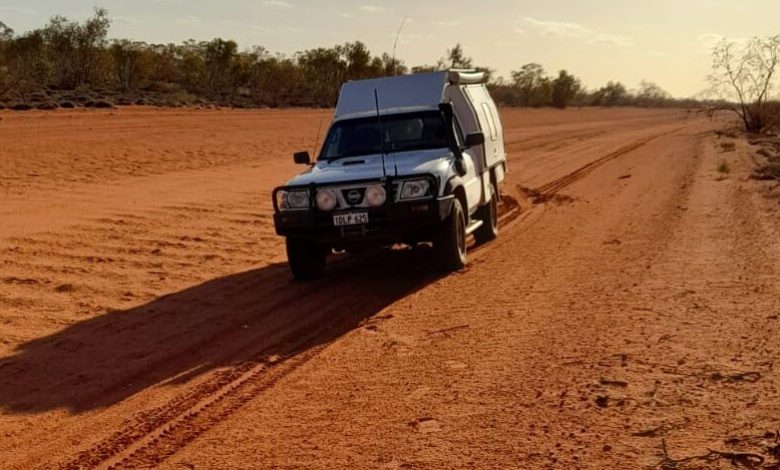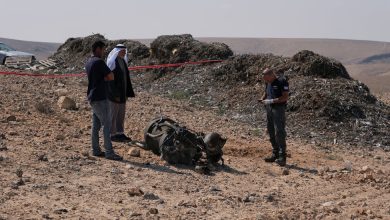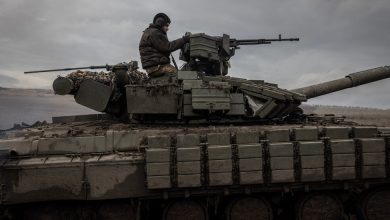The Bridge Was Out. So He Made a 3,000-Mile Detour.

MELBOURNE, Australia — There are just three routes between Kununurra, a small town in Western Australia, and the larger city of Broome.
The first, and most direct, curves over 600 miles of scrubby road. The second is a gravel track that barely features in online maps.
Chris English, who needed to get the family S.U.V. from Broome to Kununurra, weighed his options and chose the third: a 3,000-mile detour in the other direction, looping around a substantial part of Australia. An American equivalent would be driving from Montana to Idaho by way of both Dakotas, Nebraska, Kansas, Colorado, Utah, Arizona and Nevada.
“I’m a seasoned driver,” Mr. English, 64, said from Alice Springs on Thursday, four days into his trip. “As far as traveling through the center of Australia, off the beaten track and whatnot, goes, I’ve been doing it all my life. So to me personally, it’s just another trek.”
Mr. English’s hand was forced by some of the worst flooding in the history of Western Australia.
He and his wife, who live in Kununurra, a town of 5,500 people, had gone to Perth for the Christmas holidays, to spend a few weeks with their children and grandchildren. That involved driving to Broome, leaving their S.U. V. there and boarding a plane.
While they were in Perth, disaster struck. “Cyclone Ellie decided to come in behind us and dump 400-odd millimeters of rain in a very short period of time,” he said.
The record-setting rainfall caused rivers to burst their banks, creating an inland sea 30 miles wide. In images from the aftermath, puzzled-looking kangaroos can be seen wading through the muddy floodwaters, which lingered for weeks. Airstrips — relied on for food deliveries in many outback towns — were inundated, and homes were evacuated.
And the Englishes had a problem of their own: how to get the S.U.V. home from Broome.
Western Australia is the country’s biggest and most sparsely populated state, its 2.7 million people spread over an area the size of Argentina. Few roads crisscross the territory, so closing just one can cause major complications.
The flooding had washed out a stretch of the Great Northern Highway, Australia’s longest, and cut off a major bridge, Mr. English said. That would have been the most direct Broome-to-Kununurra route.
The second route, via a gravel track known as the Gibb River Road, was also impassable, he said.
“During the wet season, there’s no way you’re going to get across,” said Mr. English, who drives a school bus. “Which I know. So I go, OK, the only other way is” — he paused — “the way I’ve come.”
And so on Monday, after flying from Perth to Broome, Mr. English set out: one man, a white Nissan Patrol and the vastness of the Australian outback.
Before long, unbeknown to him, thousands were watching. Mr. English’s son Craig posted a screenshot of his mind-boggling route on Twitter, and began to share photos and other updates his father had sent from the road.
“I got a phone call from one of the kids, or my wife, saying ‘You’re famous!’” Mr. English said. “I said, ‘What do you mean?”
People around the world followed along as Mr. English wound his way through central Australia, at the lawful speed of 60 miles an hour, with no soundtrack but the drone of the engine. (He left the radio off; for much of the trip there would have been no signal in range anyway.) He spent his nights at motels or by the roadside, in a sleeping bag atop the S.U.V.
He sped past cotton trucks, car accidents and the desert countryside. He stopped to photograph greenery, unexpectedly lush after the rain; a quintet of roadside feral camels; and Uluru, the vast sandstone monolith once known as Ayers Rock, which many Australians consider the country’s spiritual heart.
“I’ve always wanted to see it raining on the rock, to see the water cascading over it,” Mr. English said. “That’s a bucket list thing.”
As he approached the rock, he said, there was rainfall — but not on Uluru. “It was raining on one side of the rock, it was raining on the other side of the rock, but not on the rock,” he said.
By Friday evening, Mr. English had stopped for the night, because of more flooding on the roads. He was just a few hours from home, where he said a couple of beers awaited him. His wife had been back for days — she’d simply flown home from Perth. (Driving to Broome had never been strictly necessary, but it meant they could book a cheaper flight.)
Mr. English had logged more miles than the distance from Moscow to Gibraltar. But he didn’t consider it remarkable. “Driving doesn’t bother me,” he said. “It’s just something I like to do.”



